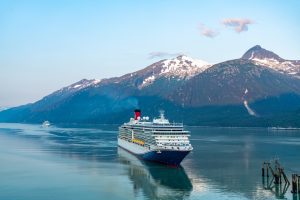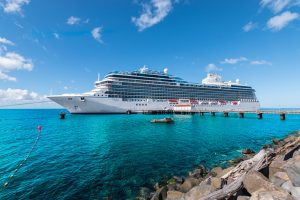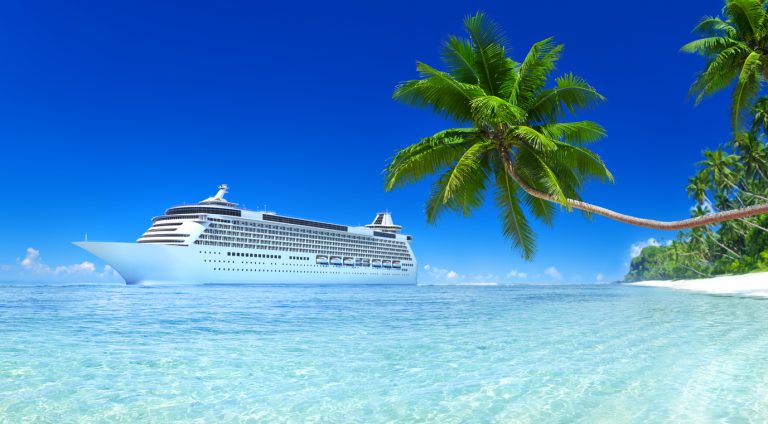Cruise liner companies must carry out robust SEO strategies to stand out and attract the right audience.
With cruise lines like P&O Cruises, Cunard Cruises, and MSC Cruises vying for online visibility, effective SEO can differentiate a brand and drive substantial organic traffic.
Let’s dive into the SEO tactics that can help cruise liner companies rise to the top of search engine rankings.
Understanding The Cruise Audience And Search Intent
To create a successful SEO strategy, it’s essential to understand who your audience is and what they are searching for.
Potential cruise-goers have different search intents depending on their travel needs, ranging from researching specific destinations to finding family-friendly or luxury cruises.
For example, P&O Cruises may attract families looking for entertainment-rich journeys, while Cunard Cruises appeals to luxury travellers interested in refined experiences.
MSC Cruises, known for its Mediterranean routes and diverse itineraries, draws in those interested in cultural immersion.
Cruise companies can develop content and keywords that align with specific interests by analysing search intent across these different customer profiles.
Conducting In-Depth Keyword Research
Effective keyword research is the foundation of a successful SEO strategy. Cruise companies such as Pure Holidays should focus on finding keywords that resonate with their specific offerings and appeal to their target audience. Cruise types, destinations, and themes may segment these keywords to maximise reach.
For instance, P&O Cruises might target keywords like “family-friendly cruises,” “Mediterranean cruises,” or “Caribbean cruises with kids.” In contrast, Cunard Cruises could emphasise terms like “luxury transatlantic cruises” or “Queen Mary 2 voyages.”
MSC Cruises could benefit from keywords such as “Mediterranean cruises,” “multi-destination cruises,” and “European cultural cruises.”
Incorporating long-tail keywords, like “affordable family cruises to the Caribbean,” can also capture niche markets and boost visibility in specific search queries.

On-Page SEO Optimisation
On-page SEO is critical for enhancing search engine rankings. Cruise companies can improve their SEO by optimising each page on their website, including cruise details, itineraries, and destination pages. Here’s how:
Craft SEO-Friendly Landing Pages: Each destination or itinerary should have a dedicated, SEO-optimised page. This allows potential customers to easily find relevant details for specific routes, such as “MSC Cruises Caribbean itinerary” or “Cunard luxury transatlantic cruise schedule.”
Meta Titles and Descriptions: Ensure every page has compelling meta titles and descriptions rich with relevant keywords. For example, a page for P&O Cruises’ Mediterranean offerings could use a meta title like “P&O Mediterranean Cruises – Sun, Sea, and Family Adventures.”
Internal Linking: Internal linking between related pages (e.g., linking a “Mediterranean Cruises” page to individual Mediterranean itineraries) helps search engines understand the site structure and encourages users to explore more content.
Image Optimisation: Cruises are highly visual experiences, and image optimisation can enhance user engagement and SEO. By compressing images, adding descriptive file names, and utilising alt tags with keywords like “P&O Cruises Caribbean sunset” or “Cunard Queen Mary 2 dining,” cruise companies can boost their on-page SEO.
Technical SEO for a Seamless User Experience
A technically sound website is essential for ranking well. A cruise company’s site should be mobile-friendly, load quickly, and be optimised for smooth navigation. Here are some technical SEO considerations:
Mobile-Friendliness: Many travellers search for cruises on mobile devices. Ensuring the website is responsive and easy to navigate on smartphones or tablets can significantly improve rankings.
Page Speed: Pages with high-resolution images and videos can load slowly, negatively impacting SEO. Cruise companies can optimise images, reduce redirects, and leverage browser caching to improve load times.
Schema Markup: Adding schema markup helps search engines understand the content structure, enhancing visibility in search results. For instance, schema can highlight reviews, prices, or specific itineraries, helping MSC Cruises or Cunard Cruises stand out with additional information directly on search results.
Local SEO for Port Cities: Local SEO helps attract customers near specific ports or embarkation points. By optimising for phrases like “MSC Cruises near me” or “Cunard departures from New York,” companies can connect with local customers interested in nearby cruises.

Content Marketing to Engage Potential Customers
Content marketing is a powerful tool for building brand awareness, engaging potential customers, and improving SEO. Blogs, guides, and itineraries are just a few ways cruise companies can attract organic traffic by offering valuable information.
Destination-Focused Content: Blogs and guides about popular destinations capture search traffic and inspire travellers. P&O Cruises might publish content like “Top Destinations in the
Mediterranean” or “Best Caribbean Islands for Families.” At the same time, Cunard could focus on “Transatlantic Crossing Tips” or “What to Expect on a Luxury Cruise.”
Seasonal Content: Creating content around seasonal events, such as holiday cruises, summer family vacations, or New Year’s getaways, allows cruise companies to capture timely search interest.
User-Generated Content: Reviews, photos, and testimonials from previous travellers can enhance SEO by providing fresh, authentic content. MSC Cruises and P&O Cruises could feature guest reviews or photos from popular destinations, adding credibility and encouraging social sharing.
Building Authority Through Link-Building Strategies
Link building is crucial for improving domain authority and boosting search rankings. Cruise liner companies can gain backlinks from credible sources by:
Partnering with Travel Influencers: Collaborating with travel bloggers and influencers allows companies to tap into established audiences. For example, MSC Cruises could work with bloggers who review Mediterranean vacations, earning high-quality backlinks from influential sites.
Connecting with Industry Publications: Press coverage from reputable travel publications is valuable for building authority. Cunard or P&O Cruises could earn links by sharing unique itineraries, new ships, or exclusive onboard experiences with travel magazines.
Working with Tourism Boards: Tourism boards are often keen to promote local cruises and attractions. Collaborating on content or receiving links from city and country tourism sites can drive valuable local traffic and boost search rankings.
Leveraging Social Media For Cross-Channel SEO Impact
Social media signals don’t directly impact SEO rankings but can drive traffic, increase brand visibility, and indirectly support SEO goals. Cruise companies like MSC, Cunard, and P&O can benefit by creating engaging content that encourages sharing and interaction.
Platform Selection: Not all social media platforms are equal for cruise brands. Instagram and Pinterest are ideal for visual storytelling, while Facebook is great for sharing events, deals, and customer reviews. Twitter can be used to interact with customers and address travel-related inquiries.
Encouraging Social Sharing: Using branded hashtags, encouraging photo sharing, or creating shareable videos about destinations or onboard activities can boost engagement. This social proof can translate into greater visibility and higher search traffic.
Measuring SEO Success
Finally, tracking SEO efforts is essential for assessing progress and making data-driven adjustments. Key metrics include:
Organic Traffic: Monitor changes in organic search traffic over time, especially for high-value keywords.
Keyword Rankings: Regularly check where your website ranks for targeted keywords, such as “Caribbean cruises” or “transatlantic luxury cruises.”
Conversions and Engagement: Track on-site engagement metrics like bounce and conversion rates to assess how effectively the content drives bookings or leads.
Using tools like Google Analytics and Google Search Console helps cruise companies gain insights into performance, identify areas for improvement, and adjust their SEO strategies accordingly.
If You Want To Learn More About SEO For Cruise Liners, Get In touch With Our Team Today!
SEO is vital to reaching potential travellers for cruise liner companies like P&O Cruises, Cunard Cruises, and MSC Cruises.
By implementing these strategies, cruise companies can enhance their online presence, attract more qualified leads, and drive bookings.
As the cruise industry grows increasingly competitive, those who invest in effective SEO will be better positioned for long-term success.

